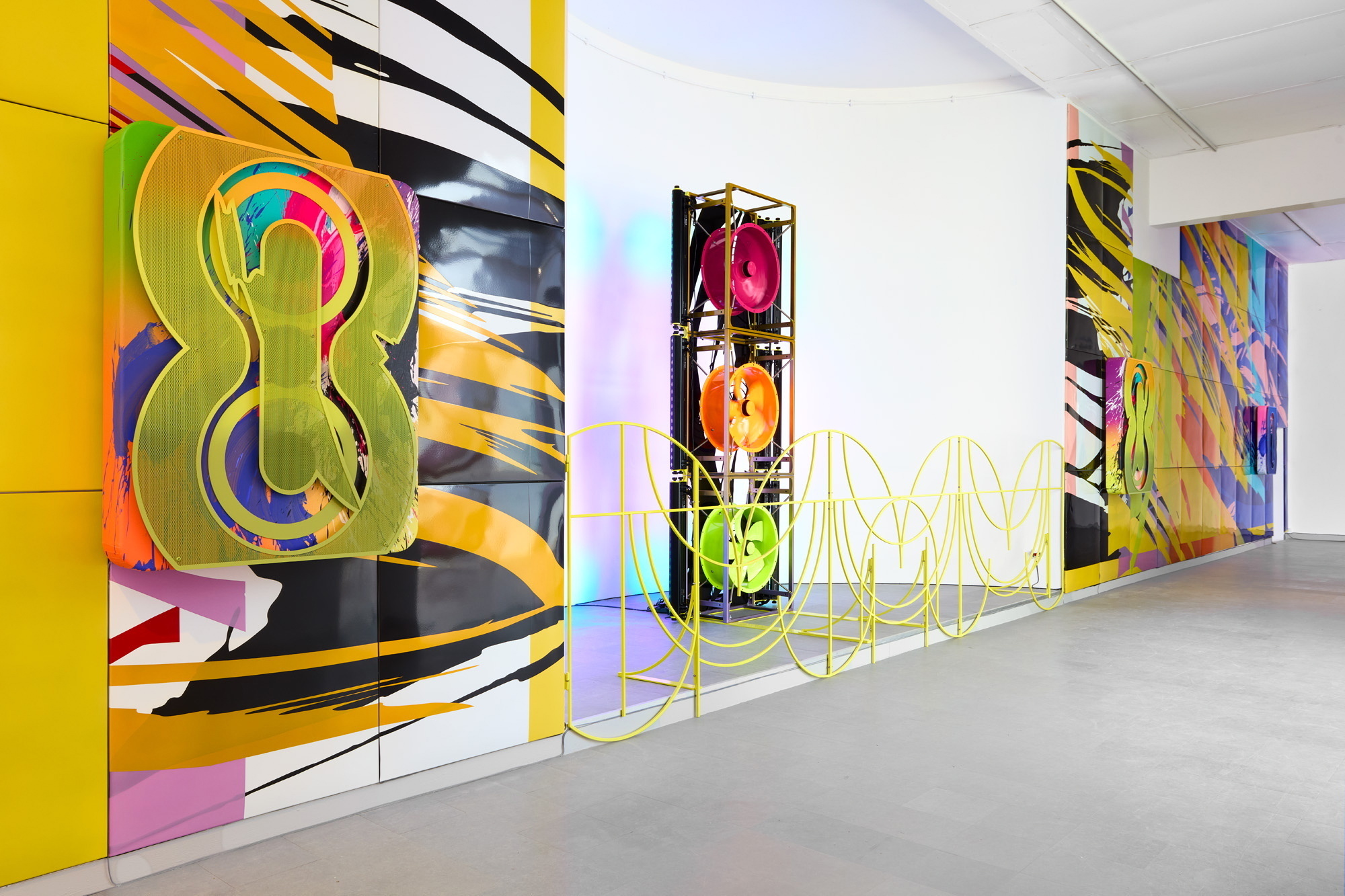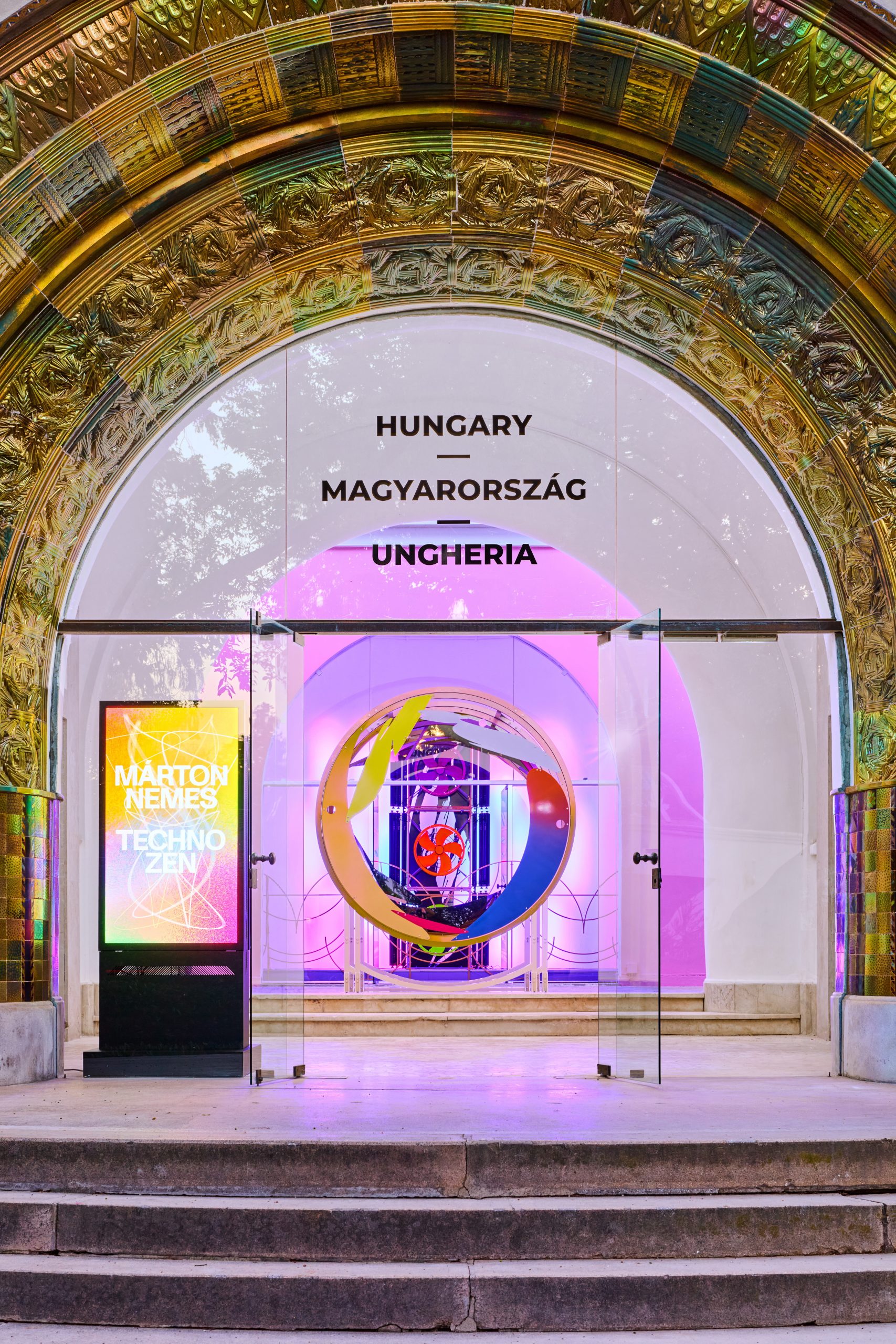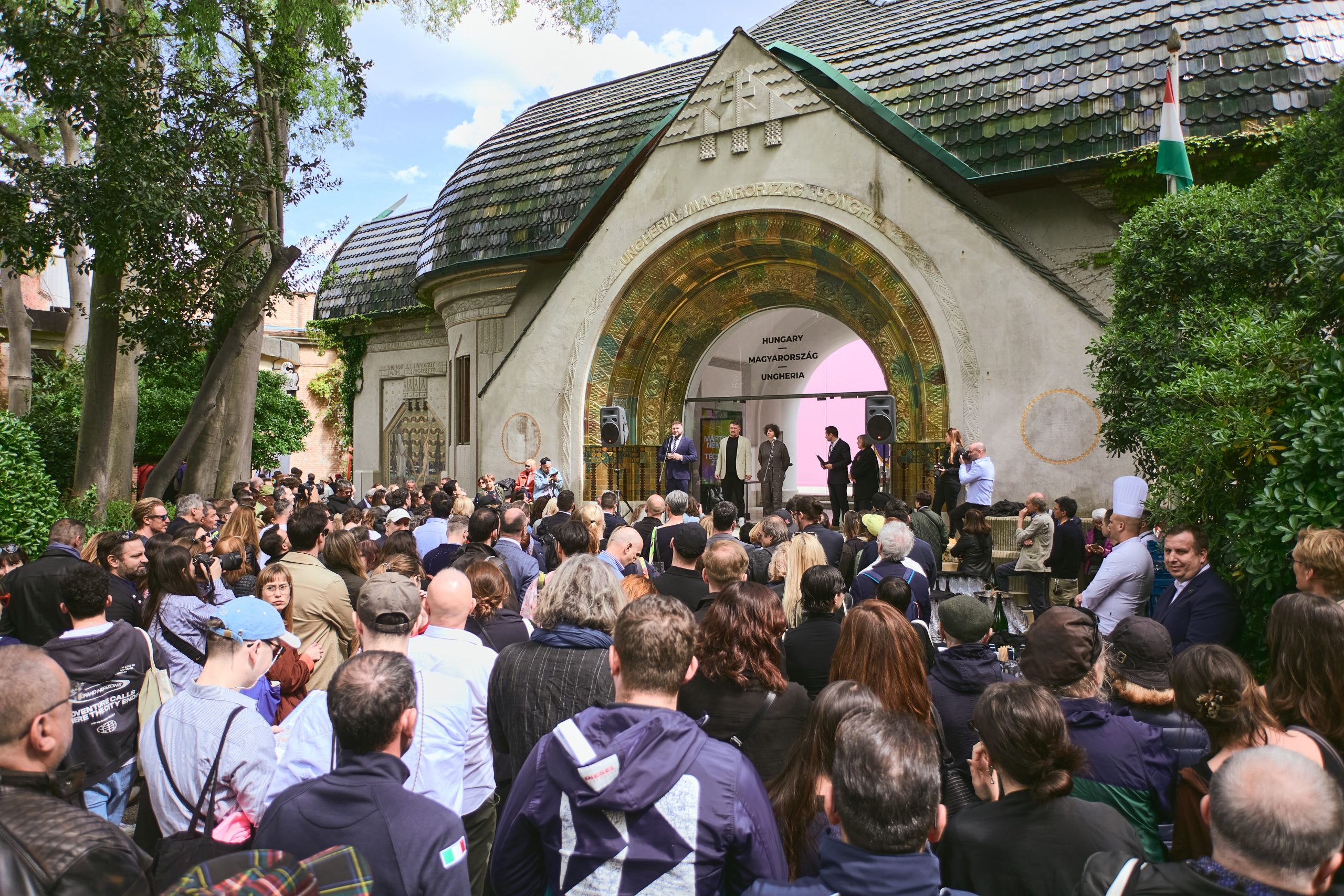
The novel's protagonist, Leopold Bloom, had Szombathely ancestry. Continue reading

The Hungarian pavilion of the 60th Venice Biennale has opened with Márton Nemes’ installation “Techno Zen,” which has already become the focus of the cultural exhibition series, stressed Máté Vincze, Deputy State Secretary for Public Collections and Cultural Development of the Ministry of Culture and Innovation.
Opening the exhibition, the deputy state secretary said that the Hungarian pavilion immediately became the “most colorful and interesting” attraction, as the crowds of visitors to the opening proved. He highlighted that
the installation of the Hungarian pavilion had “already become the star of the Biennale.”
The work of Márton Nemes goes beyond painting, as metal technology, music, and stage lights are also part of the installation,” Máté Vincze pointed out.

Photo via MTI/Ludwig Múzeum
The politician noted that the work entitled “Techno Zen” evokes the world of the subculture of the ’90s, recalling the “happy 20th century,” and the shamanic drums used in the installation also refer to the ancient tradition of reflective thinking and peace in the world. The installation is the result of a complex work, to which the artists’ collective collaboration with Nemes also contributed.
Vincze thanked the Ludwig Museum, whose director, Júlia Fabényi, National Commissioner of the Biennale, also spoke at the opening.

Photo via MTI/Ludwig Múzeum
Fabényi Julia emphasized that the artist’s basic concept, combining visual experience with sound, movement, and a wide variety of visual techniques, offers the visitor a unique experience that takes it to a new level: it is both surprising and out of the comfort zone, as all the spaces of the pavilion move and are organically integrated into the artist’s sensual universe.
The exhibition curator, Róna Kopeczky, added that
the project aims to convey a humanist message of humanity, openness, and tolerance in an age of extreme polarization, of social phenomena that are either nuanced or completely exclusive.

Photo via MTI/Ludwig Múzeum
The Hungarian pavilion will be open to the public from Friday, and after Venice, the Ludwig Museum will be showing an extended version of the exhibition in Budapest in December.
Hungary has been participating in the Venice Biennale since 1895.
Via MTI; Featured image via MTI/Ludwig Múzeum